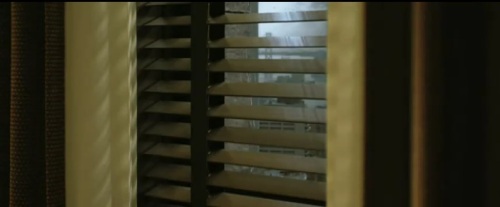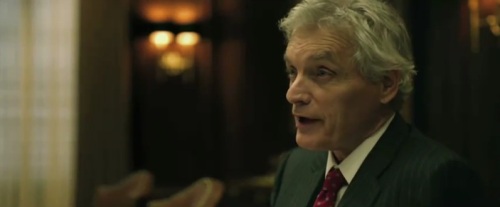In film the picture on the screen becomes our perceived world. As we watch a movie our sense of reality shifts from the theatre we are in, and becomes the reality of the images on screen. Our eye is replaced with the movie camera.
Therefore, when we see these images, we have a conception of their physical nature and how they would logically act and react. We know what a kiss is like on our lips, how we feel in a fire, and if it hurts to fall down a flight of stairs. Everything seen in the image can relate only to other images sharing the screen, nothing externally can be added, it’s impossible.
The same is not true for sound. When we hear sound in cinema it belongs to one of two classifications:
Diegetic Sound – any sound that exists within the realities of the image. We know who’s speaking because we can see them speak. We hear the sound effect that is the result of the action in the image. We can see the origins of the music playing.
Non-Diegetic Sound – any sound that exists outside the reality of the image. When a voice-over adds details and descriptions. When music is created for the film to play during the scene, but is oblivious to the characters within it.
Non-Diegetic Sound is the only thing within film that exists outside of the screen’s reality and outside the physical logic of the images we are seen. There are no limits to what the audience is allowed to hear and because it has this property, it is unique.
In film theorist and composer Michel Chion’s essay “The Three Listening Modes,” he suggests that: “On one hand, sound works on us directly, physiologically (breathing noises in a film can directly affect our own respiration). On the other, sound has an influence on perception: through the phenomenon of added value, it interprets the meaning of the image, and makes us see in the image what we would not otherwise see, or would see differently. And so we see that sound is not at all invested and localized in the same way as the image.”
By being unburdened with the limitations presented in the images, sound can delve into the more ambiguous territory of emotions and symbolism; sometimes unconsciously adding layers of significance by including audio to compliment or contrast with the image.
However, despite the exclusive privileges given to Non-Diegetic Sound, it too must serve the needs of the edit. Not knowing which sounds to include where, or worse, not caring, will only be detrimental to the film.
THE SOCIAL NETWORK
For David Fincher’s The Social Network, film composers Trent Reznor and Atticus Ross created a music track called “Hand Covers Bruise.” In it, an arrangement of three piano keys are struck over a layer of dense, electrified ambient sounds. After the piano keys repeat several times, they trail off, and leave a heavy base note to resonate through the ambience. This base note is repeated three times.
“Hand Covers Bruise” is repeated during the film, at the beginning, middle and at the end.
In this, the middle scene, the track plays as Mark Zuckerberg sits in a deposition for the lawsuit that the Winkelvoss twins have filed against him. Their lawyer, Gage, is attempting to get Mark to focus on a particular email in evidence, but due to boredom Mark’s attention drifts to the window and he comments:
“It’s raining.”
Gage, a man much older than Mark, asks “Do I have your attention?” When he receives no for an answer, he asks, “Do I deserve your attention?”
Again the answer is now. Gage almost mockingly says. “Okay, no. I don’t deserve your attention.”
The response from Mark: “I think if your clients want to sit on my shoulders and call themselves tall, they have the right to give it a try – but there’s no requirement that I enjoy sitting here listening to people lie.”
There is a quick break in the dialogue before the next line, and in that break two things happen. We cut to a close up of one of the twins -one of the peoples Mark is accusing of lying, and then…
BOOM.
On the soundtrack we hear the first heavy base note from “Hand Covers Bruise.”
Mark continues: “You have part of my attention – you have the minimum amount. The rest of my attention is back at the offices of Facebook, where my colleagues and I are doing things that no one in this room, including and especially your clients, are intellectually or creatively capable of doing.”
Though the shot stays on Mark, here is another break before the next line and again…
BOOM.
The third base note strikes. (The second one played during his last bit of dialogue)
Mark finishes: “Did I adequately answer your condescending question?”
These two base notes come from a non-diegetic source: the soundtrack, and hold no accountability towards the reality of the scene. (i.e: the boardroom and the people and objects in it)
But they strongly suggest Mark’s total win of the argument and are strategically edited to emphasize this. They are placed within the natural pauses of his counter-argument, and happen twice to take down his two opponents; first the lying Winkelvoss twins who have initiated the lawsuit, and second the condescending tone of their lawyer.
Traditionally, low base notes have been synonymous with a dark and terminal jestures, and have been a staple of horror soundtracks and compositions since the beginning of the medium. Without drawing any visual attention to it, Fincher uses these base notes to dictate the finality of Mark’s argument. He has won whether we like Mark or not.
To demonstrate its effect, try muting the sound during the pauses in dialogue and silencing the base notes. Or alternately, try shifting the base notes earlier in the scene, or later. The skill of Aaron Sorkin’s writing and the arrangement of edits still suggest Mark’s triumph, but what is lacking is that definitive feeling he has won totally and completely.
It is the soundtrack, its base notes and their perfect edits that alone convey that.
Sound and especially those that come from non-diegetic sources are an indispensable tool for filmmakers, and can expand a scene in infinite directions. But they too must be placed at the precise moments when they will best serve the scene; they too are a slave to the needs of the edit.














This is actually my favourite scene in this movie. From the school yard to the board room of an prestigious law firm, the kid who has always been the outcast is again up against the “cool” kids. This time, he is winning, in that he is being heard for the first time and has what they want! For anyone who has stood at the sidelines, this scene exemplifies, “one of our side”